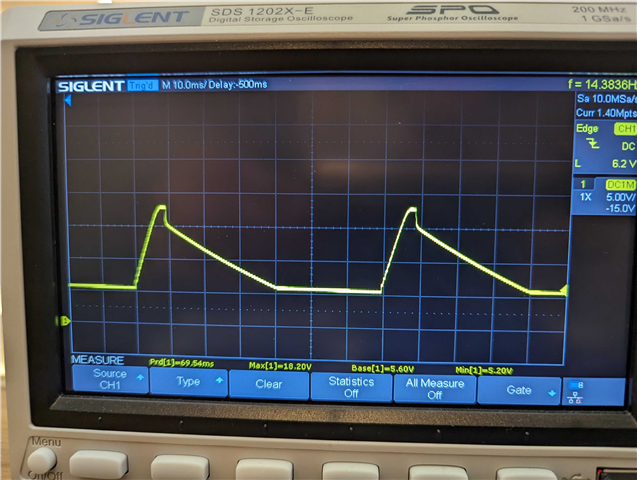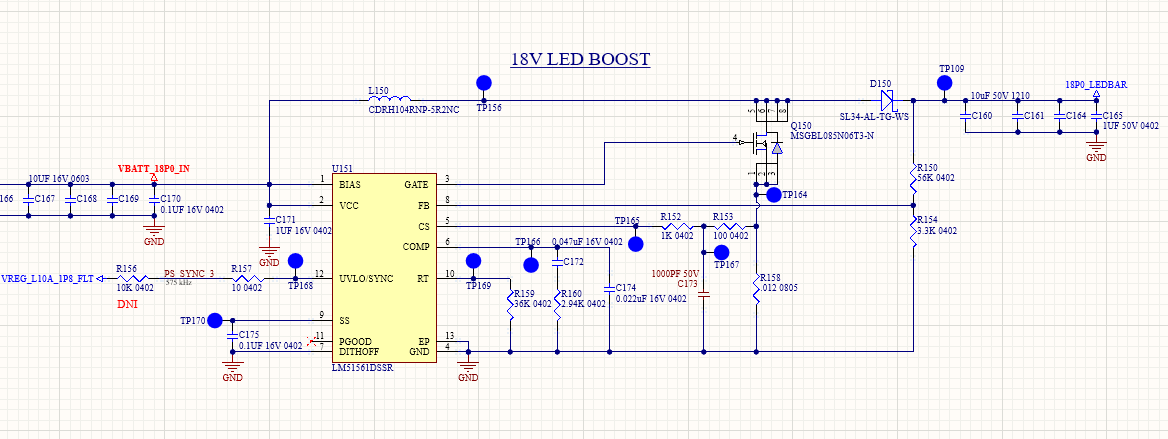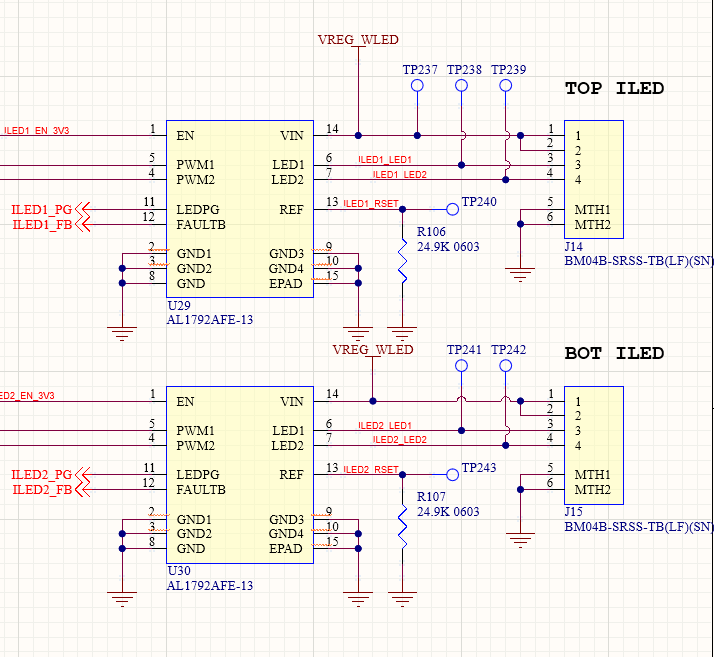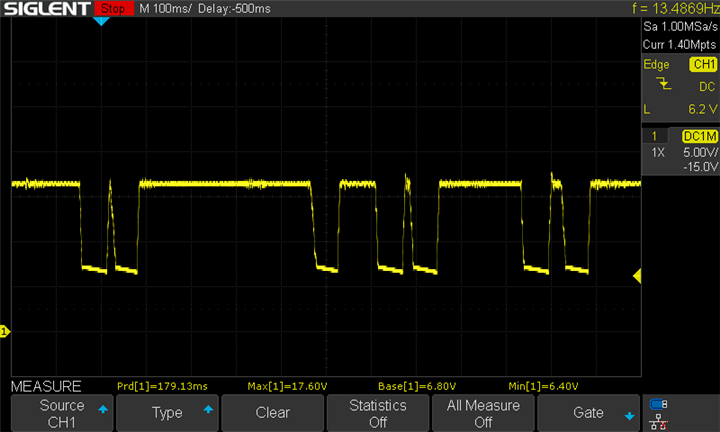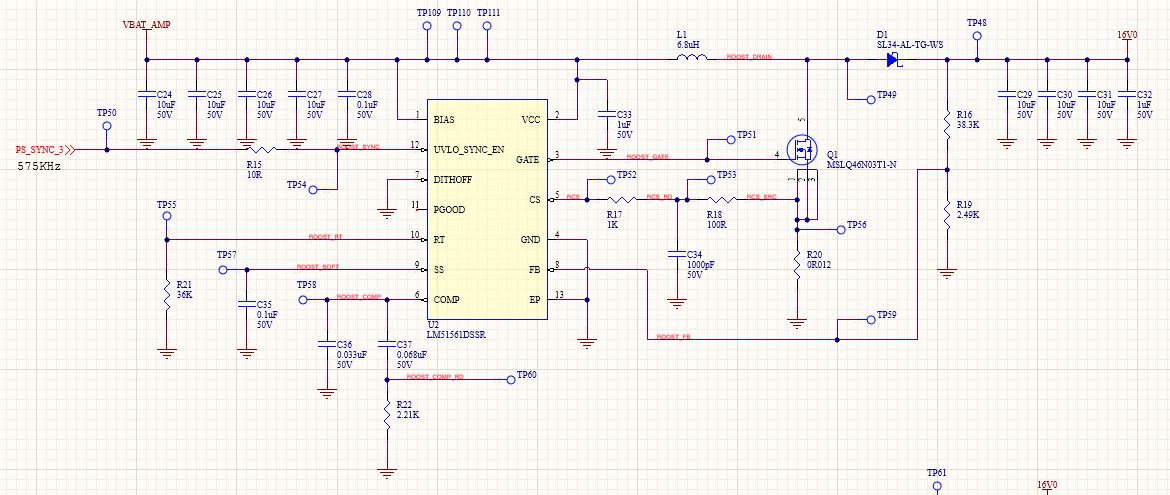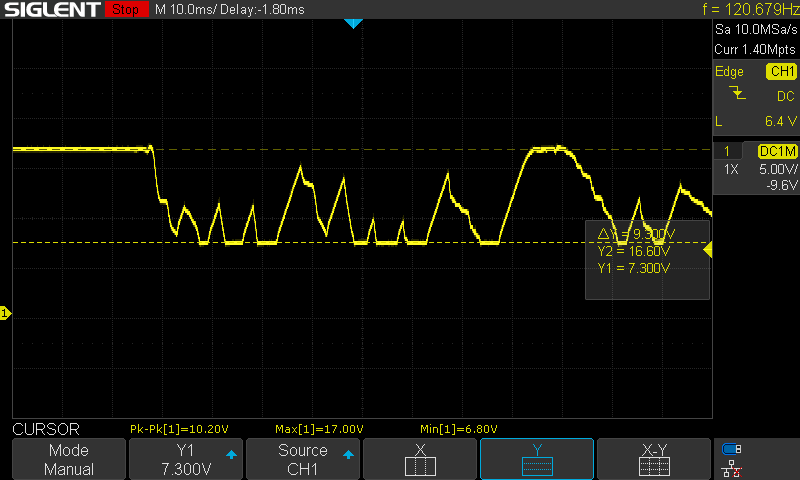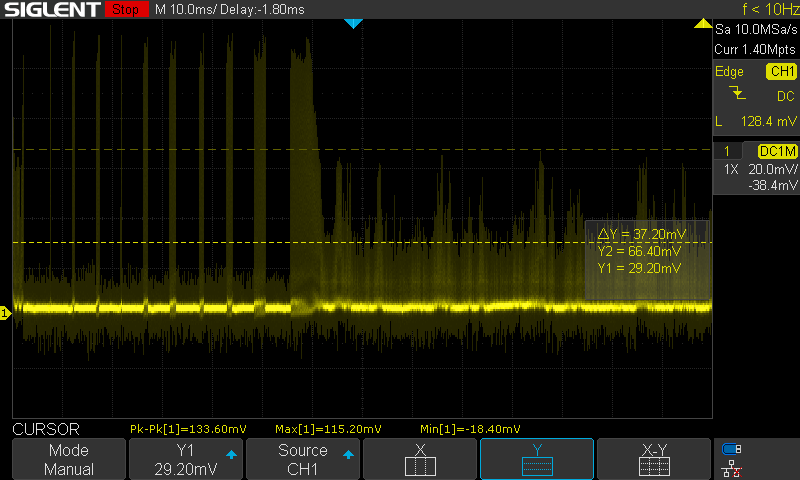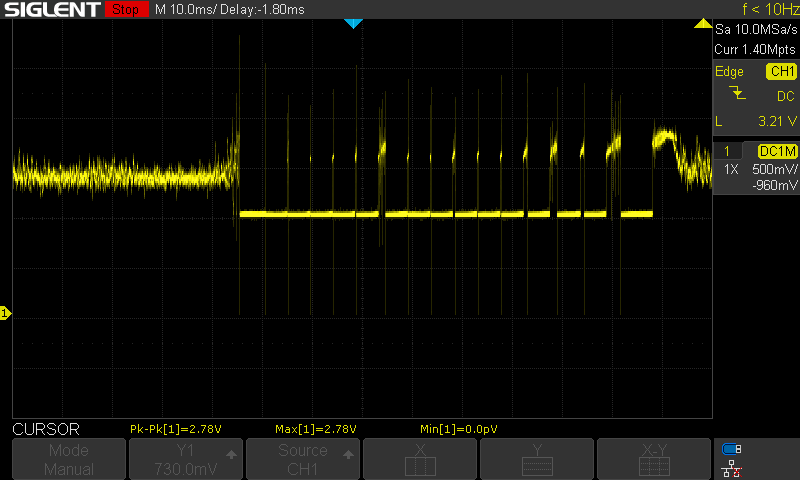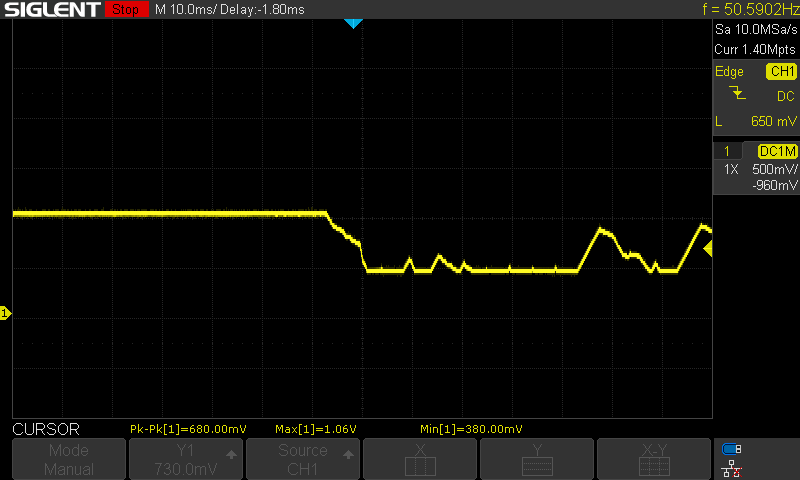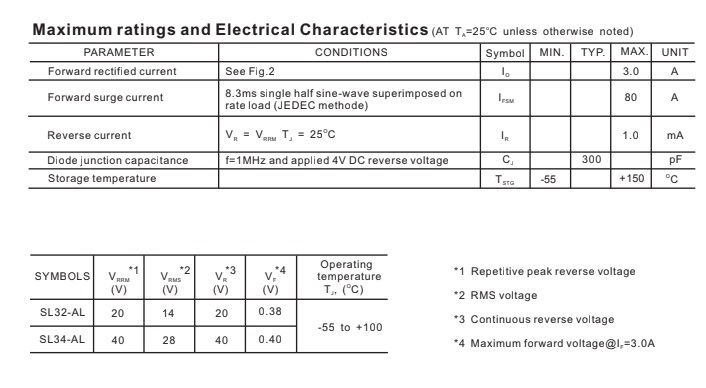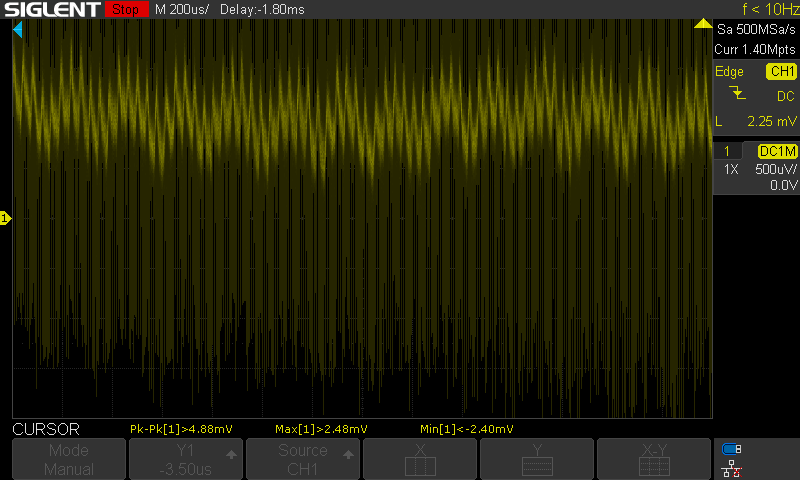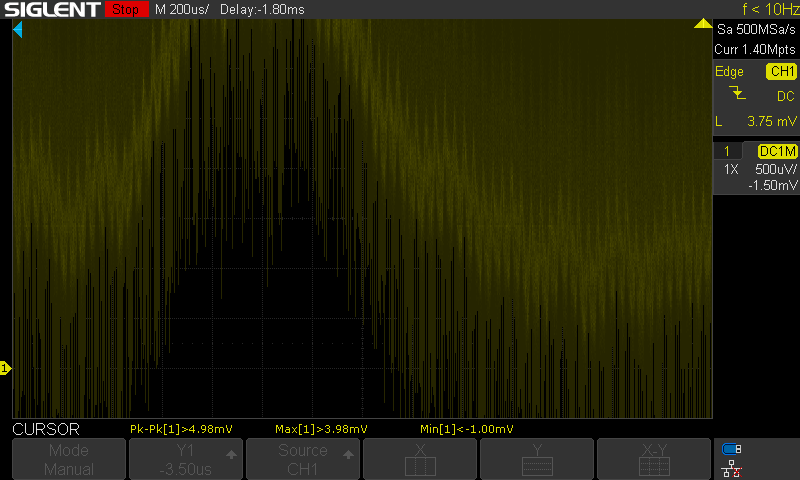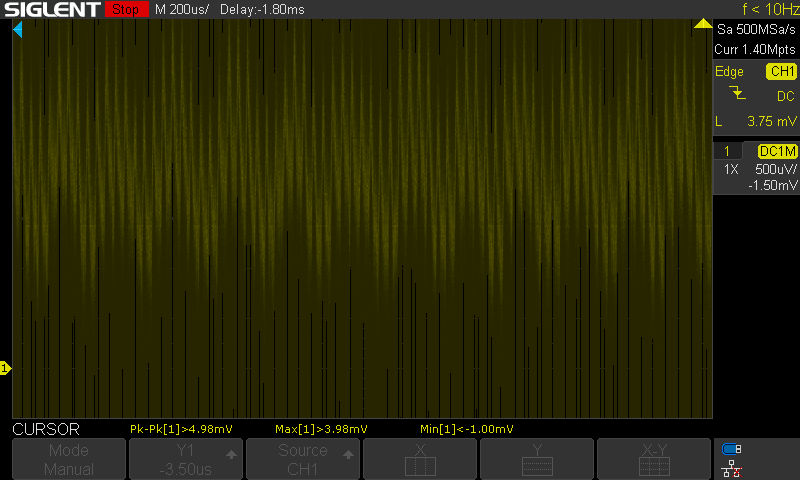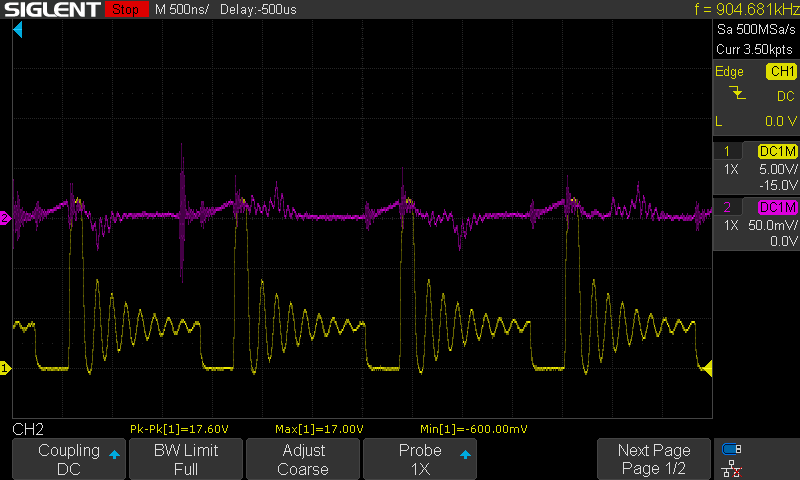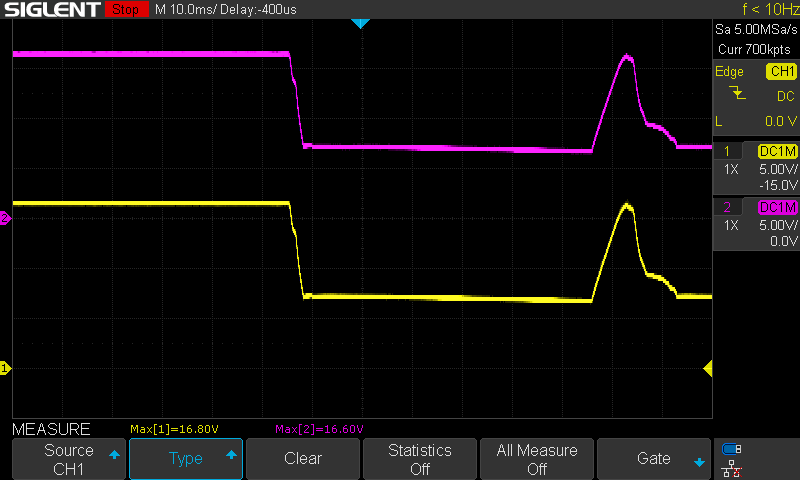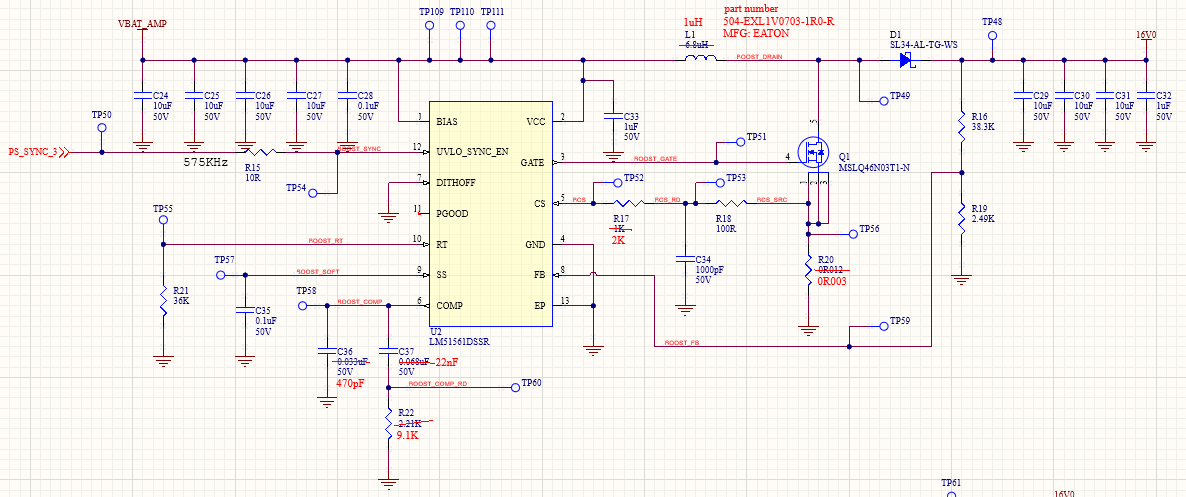I'm having issues with this boost supply in two different instances
Issue #1:
Input is 3.5V to 4.2V
Output is 18V, with an expected load of 500mA
This power supply provides power to two LED light bars, with two channels each. Each channel is 120mA for a total of 480mA. I designed the circuit with a little extra buffer at 750mA. The LED light bars are driven by a current sink (AL1792AFE-13 by Diodes, Inc) set to 120mA per channel. When both light bars are turned on, they start to flicker and I see that the voltage rail collapses. Here is the link to the simulation. Below you can see a scope shot of the rail collapsing
https://drive.google.com/file/d/15bhAi8sB0FTvUNNfBODUVxSrG4kT-2Vg/view?usp=sharing
https://drive.google.com/file/d/1_1B_9mfgefExwVK4zpFzaSLLeeAZnzoG/view?usp=sharing
https://drive.google.com/file/d/14d6bEUGmVTZCIQaIC-4G4rdiCealhirj/view?usp=sharing
I have used a benchtop supply to look at what the exact load from the LEDs are. The load does not exceed 540mA. I've played around with the design in webench and changed components to try and match the eval kit. This does yield in good results. The question remains though, why is the power supply which is designed for 750mA not able to handle a constant current load of 540mA?
Issue #2:
Input 3.5V to 4.2V
Output 16V, expected load of 630mA, designed for 750mA
This 16V rail goes on to power and amplifier for audio playback. At full volume, the audio starts to clip and I can see that the voltage rail collapses by 10V or more. See scope shot below:
https://drive.google.com/file/d/15uczyq0s-Xgx8rrUAuBy4mJqFjVBcSX-/view?usp=sharing
Schematic:
It turned out that there was some transient current of about 2A. I redesigned the supply to accommodate for this. The audio clipping is gone at full volume but I still see the rail collapse.
https://drive.google.com/file/d/1tGlATTDgEAlgP7x7d9vboZcmjt0KBpSP/view?usp=sharing
As an experiment, I spliced in the eval kit and still saw voltage rail collapse similar as shown above. I went ahead and spliced in a benchtop power supply as well and that did not exhibit any voltage rail collapse. Although the audio playback clipping is gone, seeing the rail collapse is concerning.


